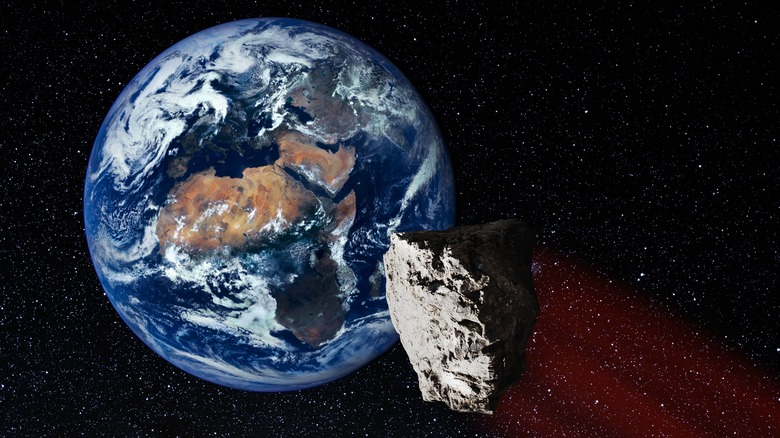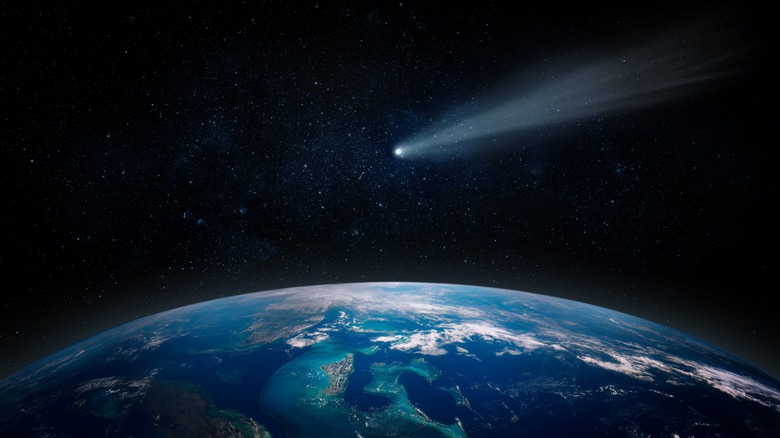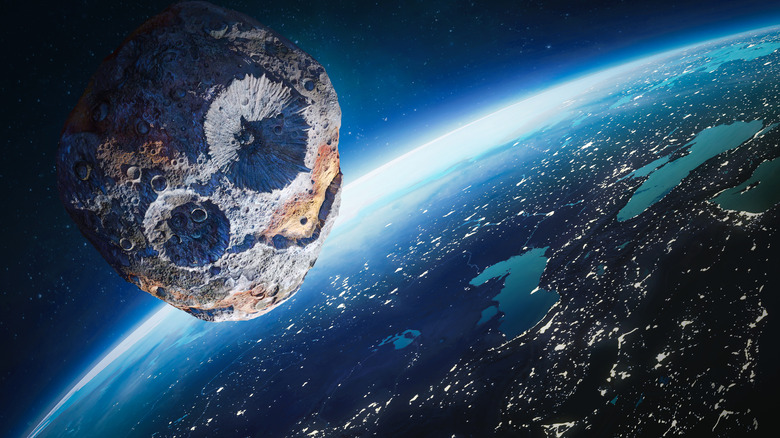The Torino Scale: The Measurement Of Asteroid Impact Explained
What are your plans for Valentine's Day 2046? According to BBC News, that's when an asteroid estimated to be around the size of an Olympic swimming pool — or around 164 feet long — might collide with Earth, and accordingly, until then NASA will track its progress. The asteroid, called DW 2023 for the year it was discovered, was given a one in 560 chance it will impact the planet on or around the date predicted, according to the space agency. DW 2023 was also given a 1 on the Torino Impact Hazard scale.
For those not aware, the Torino scale is used to estimate how likely an asteroid is to hit the Earth. With DW 2023 given a No. 1, does that mean there's no cause for worry, or does it mean instead, we should go ahead and cancel our Valentine's Day 2046 dinner plans? Tellingly, roughly 1,500 asteroids on the Torino scale — or all of them tracked — are ranked a 0, meaning there's no chance at this point any one of them will crash into us, CBS News reports. No. 1 means so far there's some chance, but still, not much cause for concern.
The Torino scale goes to 10
According to the Center for Near Earth Object Studies (CNEOS) the Torino Impact Hazard scale was adopted in the late 1990s to judge the likelihood an asteroid would crash to Earth, and if so, how disastrous it might be if it happened. On the Torino scale, so-called because the system was introduced in 1999 at the international conference on near-Earth objects in Torino, Italy (via NASA), with a zero meaning there's no chance the outer space rock will touch down on our planet.
Meanwhile, a No. 1 falls in the normal green zone, meaning there's some chance, while a No. 10 on the Torino scale, or the red zone, also classified as "certain collision," means the end of civilization could be imminent. As DW 2023 is observed, chances are it may even get downgraded, CNN points out. Despite the auspicious date the crash might happen (Valentine's Day, 2046), navigational engineer at California's Jet Propulsion Laboratory, Davide Farnocchia said (via CNN): "This object is not particularly concerning."
If DW 2023 does hit, no mass extinction is likely
And even if DW 2023 does follow through on the very slim chance it might crash into Earth, odds are it won't wreak much havoc. In comparison, the asteroid that contributed to the extinction of the dinosaurs was six miles wide, Space.com writes. Still, a 164-foot asteroid would not be any fun to be underneath, and would still likely cause significant damage to any unfortunate structure beneath it.
Only discovered in early 2023, DW 2023 was orbiting close to the Moon around the same time the Moon was full, the light from which made further observation of the celestial object somewhat difficult. It's estimated to be traveling around 16 miles per second at around 11 million miles from Earth, and if it misses us in 2046, it could still bang into us as late 2054, according to initial calculations. As navigational engineer Davide Farnocchia told CNN: "[T]he object will remain observable for weeks (even months with larger telescopes) so we can get plenty of observations as needed," and if collision risk worsens, NASA's Double Asteroid Redirection Test (DART) could likely knock if off course.


